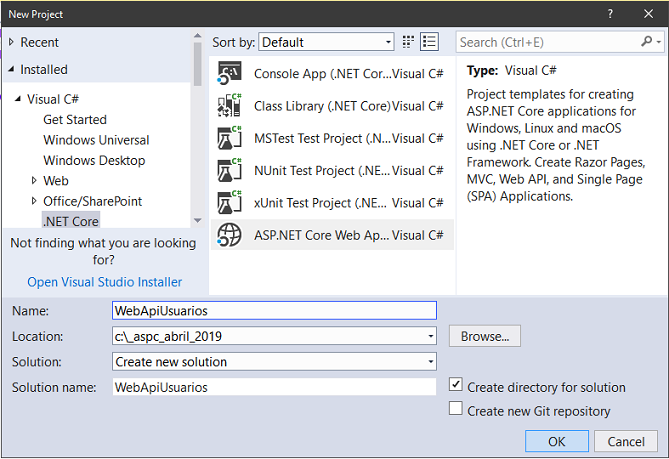

That's when you should change the connection string from "DefaultConnection": public class ApplicationDbContext : IdentityDbContext edmx for the Identity Models(I named: IdentityDbEntities). I have a ADO.Net Entity Model(.edmx file) for my main DB models and created another. There should be 5 tables: AspNetUserRoles, AspNetRoles, AspNetUsers, AspNetUserClaims, and AspNetUserLogins. You'll then want to export the dummy tables to SQL script and import them into your existing DB that you want to use them in.
#ASP.NET IDENTITY EF IDENTITYUSER MIGRATION COMMAND CODE#
You have to create a dummy project first using Code First, build and run the project, go onto the now running app in your web browser, register a user with a dummy email and password, this will cause Entity FrameWork Code First(?) to create all the Identity 2.0 DB tables in your dummy database. With DB First, changing the connection string is not going to cause Identity 2.0 to create tables in the DB.ĬORRECTION: I originally had my Identity tables in the DB under an Identity schema and when I registered new users using the below, new tables were written into my DB under the dbo schema. WITH CHECK ADD CONSTRAINT FOREIGN KEY()ĪLTER TABLE. )WITH (PAD_INDEX = OFF, STATISTICS_NORECOMPUTE = OFF, IGNORE_DUP_KEY = OFF, ALLOW_ROW_LOCKS = ON, ALLOW_PAGE_LOCKS = ON) ON Script Date: 15-Mar-17 10:27:06 PM ******/ĬONSTRAINT PRIMARY KEY CLUSTERED


 0 kommentar(er)
0 kommentar(er)
